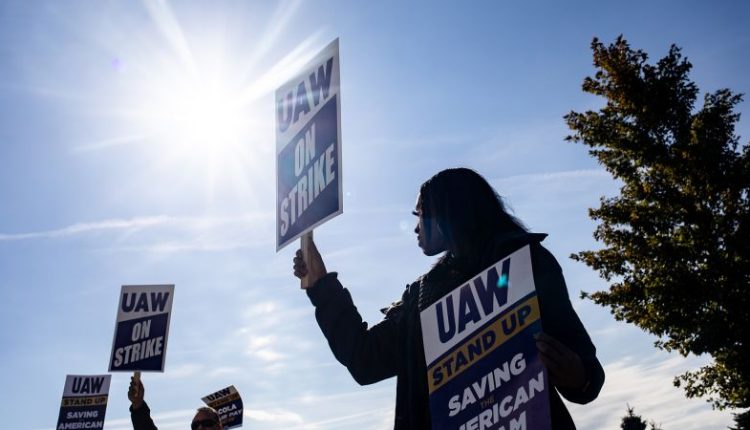As of Wednesday, the unprecedented strike by the United Auto Workers union against General Motors, Ford and Stellantis is now also the longest American auto strike in 25 years.
The last time the union struck one of the automakers, with its 2019 strike at GM, the strike lasted 40 days. Wednesday is the 41st day of the strike that started on September 15.
It is also likely that the strike would continue at the other two companies while that ratification process takes place at whichever company is first to reach a deal with the union.
This strike is also the first time the union has walked out at all three automakers at the same time. But it didn’t flex its full muscle immediately, instead conducting a targeted strike, picking select factories and facilities for the strike to disrupt company operations and put escalating pressure on the companies.
The strike is likely to go on for at least a few weeks longer. Even if the union settled with one of the companies today, the tentative agreement would need to be ratified by rank-and-file members before it would take effect. In 2019, the ratification process took 10 days to the complete. And in the past, the union has stayed on strike during the ratification process.
It started the strike with one assembly plant at each automaker, but it has expanded the strike five times since then, including the addition of a Stellantis assembly plant in Sterling Heights, Michigan, on Monday and a GM assembly plant in Arlington, Texas on Tuesday.
Those are the largest plants in terms of vehicle output at those companies, respectively, and also among their most profitable. Ford’s largest plant, the Kentucky Truck Plant in Louisville, has been on strike since October 11.
The fact that the union has added those three massive plants to its strike targets means that is has now idled nearly 50% of the combined US output of the three companies, according to industry consultant GlobalData.
The plants shutdown by the strike at GM normally produce about 3,415 vehicles a day, or 51% of its US output, while it has halted production of 3,050 vehicles a day at Ford, and 2,165 vehicles a day at Stellantis, or 56% its output, according to GlobalData’s estimates.
The union has shutdown that much production with only 45,000 members on strike, or about 31% of the 145,000 who work at the three companies. Another 7,000, or about 5% of membership, were temporarily laid off by the companies due to the disruptions caused by the strike.
And the union has threatened to further expand the strike if it doesn’t see the progress it wants at the bargaining table. All three companies have offered pay increases totalling 23% through the end of the contract in 2028, including immediate 10% pay hikes, as well as cost-of-living adjustments to protect workers from rising prices and improved job guarantees and contributions to retirement accounts.
All the companies are on record saying they want to reach a deal to end the strike, as has the union.
Tuesday’s expansion of the strike came hours after GM reported stronger than forecast third quarter earnings, despite a $200 million hit it took from the strike in the last two weeks of the period. The UAW cited the strong earnings in its statement about wanting more from GM that it has thus far offered at the table.
Ford is due to report third quarter results after 4 pm Thursday, and it is expected to report improved earnings as well. The union would not comment on whether it will announce an expansion of the strike there if Ford’s results are strong, but it is on record saying all the companies should be offering more, while company executives are on record saying it has reached the limit of what it can offer.
Read the full article here

